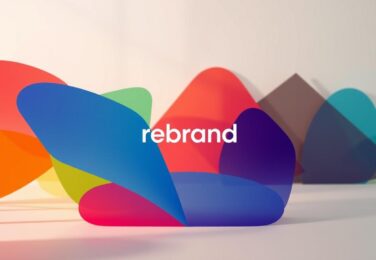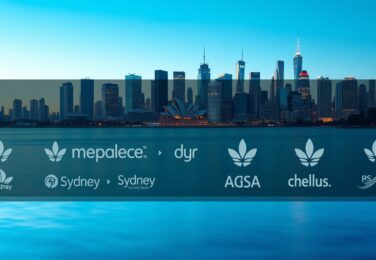Branding VS Rebrand and Repositioning

Table of Content
“The way to get started is to quit talking and begin doing.” These words by Walt Disney capture the heart of brand development in today’s Australian market. Businesses face challenges when setting up or updating their image. It’s key to know the differences between branding, rebranding, and repositioning.
We help businesses through these steps, making sure they choose wisely. Whether you want a new look or a refresh, our brand development skills can help you succeed.
Key Takeaways
- Understanding the differences between branding, rebranding, and repositioning is vital for strategic decision-making.
- Each approach serves different business objectives and requires specific resources.
- Effective brand development is key in Australia’s competitive business world.
- Our expertise can help you find the best way to meet your business goals.
- A well-planned brand strategy can greatly improve your market standing.
The Evolving Landscape of Brand Design in Australia
The Australian brand design scene is changing fast in 2023. This is due to new consumer needs and tech advancements. Businesses are now using more complex and detailed branding strategies.
2023 Trends Reshaping Australian Branding Practices
Several trends are changing how brands are made in Australia this year. Two big ones are brands focusing on being green and the comeback of simple designs.
Sustainability-Focused Brand Identities
More brands are now focusing on being sustainable. They’re using eco-friendly messages and visuals to show they care about the planet. This change is because of what people want and new rules.
- Using eco-friendly materials in packaging and branding
- Adding green visuals and messages
- Telling stories about being sustainable
Minimalist Design Resurgence
At the same time, minimalist design is coming back. Brands are making their looks simpler, with clean and useful designs. These designs work well online.
- Making logos and branding simpler
- Using white space for better looks
- Putting more focus on typography and clear messages
How Digital Transformation is Revolutionising Brand Strategies
Digital changes are big for brand strategies in Australia. Two main areas are how social media affects visibility and the use of AI and automation in managing brands.
Social Media’s Impact on Brand Visibility
Social media is key for brands to be seen and talked to. Companies use these platforms to share their story, connect with people, and build a brand community.
- Using ads on social media
- Creating interactive content
- Working with influencers
AI and Automation in Brand Management
AI and automation are changing how brands are managed. These tools help make customer experiences more personal and make decisions based on data. They also make work easier and brands more efficient.
- Using AI for personal customer experiences
- Automating routine tasks in brand management
- Using data for smart branding choices
Defining the Core Concepts in Today’s Market
In Australia’s fast-changing business world of 2023, knowing the basics of branding is key to success. The modern business scene needs a deep dive into branding, not just the visual stuff.
What Constitutes a Brand in Australia’s 2023 Business Environment
A brand today in Australia is more than just looks. It’s about the whole experience customers have at every touchpoint. Effective branding means making real and consistent connections with today’s picky consumers. It’s not just about looks but also values, messages, and how customers feel.
The Comprehensives Process of Branding for Modern Businesses
Branding for today’s businesses is all about strategic planning, deep market research, and understanding competitors. It also means building a brand that fits with your business goals. Brand consulting is key to handle today’s market and make a brand strategy that works.
When Rebranding and Repositioning Become Strategic Necessities
Businesses need to know when it’s time to rebrand or change their position. This usually happens when the market changes, the business grows, or when there’s competition or new consumer tastes. We help find these key moments and craft brand strategies that keep the brand strong while it evolves.
The Fundamentals of Brand Design
Brand design is key to standing out in Australia’s competitive market. It needs a smart mix of looks and function in today’s digital world.
Essential Elements of Effective Brand Design in the Digital Age
We concentrate on important parts for brand identities. This includes logo creation that fits on any device. Typography selection, color psychology, and imagery style all help tell your brand’s story.
Our graphic design services make sure these parts work together. A good brand design is vital for a strong market spot.
| Design Element | Description | Impact on Brand Identity |
|---|---|---|
| Logo Creation | Versatile logo that works across multiple platforms | Establishes brand recognition |
| Typography Selection | Choosing typography that reflects the brand’s personality | Communicates brand values |
| Color Psychology | Selecting colors that evoke the desired emotional response | Influences consumer perception |
The Role of Visual Identity in Building Brand Recognition
Visual identity is vital for brand recognition. Being consistent across all touchpoints helps create lasting memories in customers’ minds. This consistency is essential for making your brand stick in people’s minds.
How Strategic Brand Design Influences Consumer Perception
Strategic brand design greatly affects how people see your brand. It can spark emotions and share your brand’s story without words. We use these psychological tricks to make designs that connect with your audience and help your business goals.
Initial Branding: Building from the Ground Up
In Australia’s fast-changing business world, starting a new brand is a big task. We, as a top branding agency, help our clients through a detailed discovery phase. This includes market analysis, figuring out who their audience is, and where they stand against competitors.
The Strategic Process of Creating a New Brand in Today’s Market
We start by digging deep into market research. We look at how people behave and find gaps in the market. This helps us create a unique value that speaks to the audience.
Key Components of Successful Brand Development
Building a strong brand needs a few key things:
- Brand Strategy: Setting the brand’s mission, vision, and values.
- Naming: Coming up with a name that’s memorable and fits the brand.
- Visual Identity: Designing a logo, color scheme, and typography that stands out.
- Messaging Architecture: Creating a consistent tone and language for the brand.
Case Studies: Notable Australian Brand Launches of 2023
2023 has seen many new brands in Australia. Here are a few examples:
Tech Sector Innovations
| Brand | Innovation | Impact |
|---|---|---|
| TechHub | AI-driven customer service platform | Revolutionised customer interaction |
| SecurePay | Blockchain-based payment solutions | Enhanced transaction security |
Retail Brand Transformations
Retail brands have also changed a lot. They’ve adapted to new consumer needs and digital shopping. For example, a big retail brand updated its image to focus on sustainability and digital inclusion.
“Rebranding is not just about changing the visual identity; it’s about redefining the brand’s purpose and relevance in the market.”
As we see more new brands in Australia, it’s clear that a good brand strategy is key. Knowing the market, creating a unique value, and having a clear visual identity helps businesses stand out in Australia’s competitive market.

Rebranding: When and Why Australian Companies Transform
Rebranding is more than a new logo. It’s a big plan for Australian businesses to keep up with the market. As they grow, their brand must change to stay relevant and competitive.
Identifying the Signs That Indicate a Need for Rebranding
Australian companies rebrand for many reasons. Knowing when to do it is key. We help spot signs like:
- Outdated visual aesthetics: When the brand looks old compared to today’s trends.
- Misalignment with current business direction: When the brand doesn’t match the company’s mission or values.
- Market perception issues: When people see the brand in a bad light or don’t get its value.
- Competitive pressures: When the brand needs to stand out more in a busy market.
- Merger and acquisition activities: When companies join forces, a new brand is often needed.
The Strategic Approach to Rebranding in a Competitive Market
When these signs show up, a smart rebranding plan is needed. This means creating a brand strategy that keeps the brand’s good parts while making it fresh. Good rebranding needs:
- Deep research to get the market, what people think, and what rivals are doing.
- Talking to stakeholders to get everyone on board.
- Slow changes to ease the transition and avoid big problems.
Recent Australian Rebranding Success Stories
Recent Australian rebranding stories teach us a lot. They show how to do it right. Here are some examples:
Woolworths’ Brand Evolution
Woolworths shows how a classic brand can update without losing trust. They kept what’s familiar but made it look modern for the web.
Telstra’s Digital Transformation
Telstra’s change shows how rebranding can help a business grow. They updated their look to show they’re now a tech company, ready for the future.
These stories show how smart rebranding can make old businesses new again. It helps them grow in the tough Australian market.
Brand Repositioning: Shifting Perceptions in the Australian Market
Australian companies are now focusing on brand repositioning to stay ahead. This means changing how people see a brand without changing its look. Our brand consulting helps businesses grasp this idea and apply it in Australia.
Understanding the Concept of Brand Repositioning
Unlike rebranding, which changes how a brand looks, repositioning tweaks its image and message. It’s about appealing to new audiences or keeping up with market changes. This way, businesses can refresh their brand without a full rebrand. Good repositioning needs smart brand marketing to change how people see a brand while keeping it familiar.
Strategic Reasons for Repositioning Your Brand
Businesses reposition for many reasons, including:
- Addressing competitive threats by differentiating your brand
- Targeting new market segments to expand your customer base
- Responding to changing consumer preferences to stay relevant
- Capitalising on emerging opportunities to drive growth
These reasons show how brand repositioning can make a business more flexible and responsive in a fast-changing market.
Australian Companies That Have Successfully Repositioned in 2023
In 2023, many Australian companies have repositioned to keep up with the market. For example, financial services have become more customer-focused. Retail brands have highlighted their green credentials to match what consumers now value.
| Company | Industry | Repositioning Strategy |
|---|---|---|
| NAB | Financial Services | Customer-centric positioning |
| Coles | Retail | Emphasising sustainability |
| Telstra | Telecommunications | Digital service focus |
These examples show how changing how a brand is seen can breathe new life into a business and open up new opportunities for growth.
Branding vs. Rebranding: Key Differences and Considerations
Branding and rebranding are two different strategies. They serve different purposes. Understanding these differences is key to business success. As a branding agency, we guide clients through these differences and their implications.
Branding needs a lot of investment in research and strategy. It also requires creating a new visual identity from scratch. Rebranding, though more complex, can use the existing brand’s strengths. It focuses on changing specific parts.
Resource Requirements: Time, Budget, and Expertise
Branding can take more time, but rebranding needs careful planning. The budget for branding is high due to research and creating a new visual identity. Rebranding might cost less if it uses what’s already there.
| Aspect | Initial Branding | Rebranding |
|---|---|---|
| Time Frame | Flexible, but often lengthy | Phased, with careful planning |
| Budget | Substantial for research and new visual identity | Variable, potentially lower if leveraging existing elements |
| Expertise | Requires broad expertise in branding and market analysis | Demands strategic insight into brand evolution and market trends |
Risk Assessment: What’s at Stake in Each Approach
New brands must build awareness in a crowded market. Rebranding risks losing current customers or brand value if not done well. We weigh these risks to pick the best strategy.
Decision Framework: Choosing the Right Strategy for Your Business Stage
We’ve created a framework to help businesses decide between branding and rebranding. It looks at growth stage, market position, and goals. It considers factors like maturity, market conditions, competition, and resources.
- Business maturity: Is the company established or new?
- Market conditions: How competitive is the market?
- Competitive landscape: How does the brand stand out?
- Available resources: What is the budget for branding or rebranding?
Repositioning vs. Rebranding: Subtle Distinctions with Major Impacts
In the world of brand management, knowing the difference between rebranding and repositioning is key. Both are important for keeping up with market changes. But they have different roles and effects on a brand’s identity and how it’s seen in the market.

When Repositioning is Preferable to a Full Rebrand
Repositioning is a good choice when a brand’s value is high but its place in the market needs a tweak. It’s great for reaching new customers without losing the old ones. It’s also useful for countering competitors without changing how the brand looks.
We guide our clients in picking the right path for their brand. This ensures they make the best choice for their business.
- When brand equity is strong but market positioning is off.
- When targeting new customer segments without losing existing ones.
- In response to competitive threats requiring strategic shifts.
- When resource constraints make a full rebrand impractical.
Combining Elements: Partial Rebrands with Repositioning
Many brands find success by mixing rebranding and repositioning. This approach updates certain brand design parts while changing the message and market stance. It’s a way to get the best of both worlds while avoiding the downsides.
| Strategy | Key Elements | Benefits |
|---|---|---|
| Partial Rebrand with Repositioning | Refreshing brand design elements, shifting messaging and market positioning | Leverages benefits of rebranding and repositioning, mitigates risks |
| Full Rebrand | Complete overhaul of brand identity | Radical change in brand image, significant resource investment |
| Repositioning | Adjusting market positioning without changing brand identity | Cost-effective, strategic shift in market presence |
Measuring Success in Repositioning Efforts
Success in repositioning is measured differently than in rebranding. It’s about how people see the brand, reaching new audiences, and standing out against competitors. We help clients set up the right metrics to track these important changes.
By understanding the fine line between repositioning and rebranding, businesses can make smart moves to grow their brand.
The Role of Brand Strategy in Modern Brand Development
Brand strategy is key in today’s business world. It’s the base for all marketing plans. In a world full of competition, a strong brand strategy helps businesses stand out and reach their goals.
Developing a Cohesive Brand Strategy for the Australian Market
To make a strong brand strategy for Australia, you need to know the local market well. This includes understanding the competition and what people like. We use research and insights to make strategies that help businesses stay ahead.
- Understanding consumer behaviors and preferences
- Analysing competitor strategies and market positioning
- Identifying unique value propositions
- Aligning brand messaging with business objectives
Aligning Brand Strategy with Business Objectives and Market Demands
Linking brand strategy with business goals is important. It makes sure marketing helps the company grow. This could mean setting a high price for your products or expanding into new areas.
What the market wants also shapes your strategy. This includes what people expect, new tech, and what others are doing.
| Business Objective | Brand Strategy Alignment | Market Demand Consideration |
|---|---|---|
| Premium Pricing | Positioning brand as high-quality | Consumer willingness to pay premium |
| Expansion into New Categories | Building brand trust and credibility | Market demand for new category |
| International Growth | Establishing brand credibility globally | Global market trends and consumer expectations |
By creating a brand strategy that matches business goals and meets market needs, companies can grow and stay competitive in Australia.
Technical Implementation Challenges in Brand Design
As businesses grow online, they face many technical hurdles in using their brand design well. It’s key to make sure the brand looks the same everywhere online. This keeps the brand’s image strong.
Ensuring Brand Consistency Across Digital Platforms
Keeping the brand look the same on websites, apps, and social media needs careful planning. We make responsive logo variations for different screens and color values for different displays.
- Creating typography that works on all platforms
- Having a detailed brand style guide
- Ensuring the same feel on all devices
Working with Developers on Brand Implementation
Working well with developers is key for a good brand launch. We share clear plans and details to make sure the design works online.
We help connect design and tech by giving technical specifications to developers. This lets them bring the brand to life online.
Common Customisation Challenges
Keeping the brand look the same on all screens and devices is hard. Adding complex brand elements can also be tricky.
| Challenge | Description | Solution |
|---|---|---|
| Maintaining Visual Integrity | Ensuring brand elements look good on various screen sizes | Responsive design techniques |
| Consistent User Experience | Providing a uniform experience across different platforms | Comprehensive brand guidelines |
| Implementing Complex Brand Elements | Technical constraints can limit brand element implementation | Collaborative workflows between designers and developers |
Solutions for Seamless Brand Integration
We’ve created modular design systems and comprehensive brand guidelines with tech specs. Our method is to work together from the start. This ensures the brand fits perfectly online.
Using these methods, businesses can make sure their brand looks the same everywhere online. For help with customising your brand, email us at hello@defyn.com.au.
Conclusion: Making the Right Strategic Choice for Your Australian Business
Deciding between initial branding, rebranding, and repositioning is a big choice for Australian businesses. As a top branding agency, we offer the knowledge and advice you need. The best choice depends on your business’s growth, market position, competition, and resources.
Our brand consulting services help you figure out which path is best for your business. By knowing the differences between initial branding, rebranding, and repositioning, you can make smart choices. This will help your brand succeed in Australia’s fast-changing market.
Starting a new brand, refreshing an old one, or changing how people see you requires careful planning. It needs creative thinking, technical skills, and strategic insight. We help businesses make the best choice, tackling complex tasks and creating digital solutions that achieve their goals.










